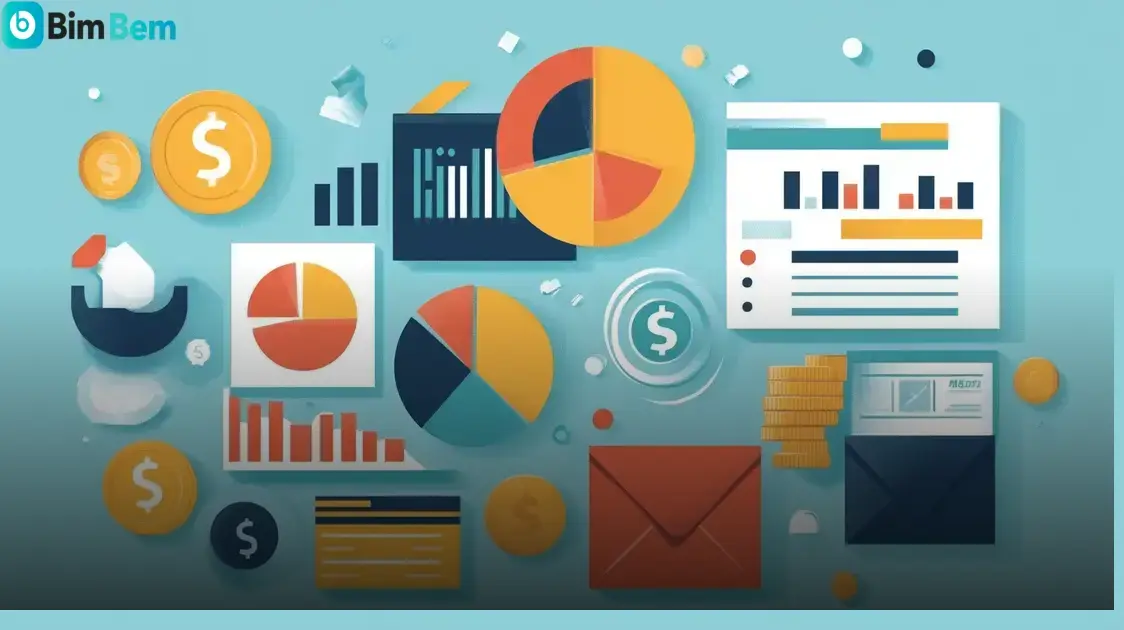Anúncio
Budgeting strategies are essential for managing your finances effectively.
By setting clear goals, tracking your income and expenses, and using technology, you can create a successful budget that helps you achieve financial freedom and stability.
Anúncio
Mastering budgeting strategies is essential for anyone looking to achieve financial stability and freedom.
In today’s world, where financial literacy is crucial, understanding how to manage your income and expenses effectively can set you on a path to success.
Anúncio
Understanding Budgeting Strategies
Understanding budgeting strategies is important for managing your finances effectively.
Budgeting helps you track your income and expenses, allowing you to make informed decisions about your financial future.
A solid budgeting strategy can lead to savings, debt reduction, and ultimately, financial freedom.
Why Budgeting Matters
Budgeting is the foundation of financial planning. By creating a budget, you can identify your spending habits and find areas where you can cut costs.
This process helps prevent overspending and encourages savings for future needs.
Moreover, a well-planned budget can help you prepare for unexpected expenses, keeping your financial stability intact.
Identifying Your Financial Goals
Before creating a budget, it’s crucial to identify your short-term and long-term financial goals.
Do you want to save for a holiday, pay off debt, or build an emergency fund? Setting clear goals will guide your budgeting decisions.
Write down your goals and prioritise them based on urgency and importance.
Tracking Your Income and Expenses
To understand your spending, you need to track both your income and expenses.
Document every source of income and every expense, categorising them into fixed (rent, utilities) and variable (groceries, entertainment).
This process will highlight where your money goes and help you identify areas for improvement.
Creating a Realistic Budget
Your budget should reflect your financial reality, including your income and necessary expenses. Be realistic about your spending habits.
A common budgeting method is the 50/30/20 rule, where 50% of your income goes to needs, 30% to wants, and 20% to savings and debt repayment.
Adjust these percentages as needed to fit your lifestyle.
Continual Review and Adjustments
A budget is not set in stone; it should be a living document that evolves with your circumstances.
Regularly review your budget to see if you are meeting your goals.
If you find that you are consistently overspending, it may be time to reassess your budget categories and limits.
Benefits of Mastering Budgeting Strategies
By understanding budgeting strategies, you can develop financial discipline, reduce stress related to money, and achieve your financial goals.
A well-crafted budget serves as a roadmap to success, empowering you to take control of your finances.
Key Principles of Effective Budgeting
When it comes to budgeting, adhering to the key principles of effective budgeting is essential for success.
These principles help ensure that your budgeting efforts lead to financial stability and growth.
Set Clear Financial Goals
First, it is vital to establish clear and achievable financial goals.
Determine what you want to achieve with your budget, such as saving for a holiday, clearing debts, or building an emergency fund.
Clear goals make it easier to stay motivated and focused.
Create a Detailed Budget
A detailed budget is crucial for tracking your finances.
Include all sources of income and every expense category, such as housing, food, transportation, and entertainment.
Being specific helps you see where your money goes and identify areas for cuts or adjustments.
Prioritise Needs Over Wants
When budgeting, always prioritise your needs before your wants.
Needs are essential expenses, like rent and groceries, while wants can be luxuries, like dining out or new gadgets.
Focus on fulfilling your needs first to ensure financial security.
Use the 50/30/20 Rule
One effective way to manage your budget is by using the 50/30/20 rule.
Allocate 50% of your income for needs, 30% for wants, and 20% for savings and debt repayment.
This simple guideline helps you maintain a balanced approach to your finances.
Review and Adjust Regularly
Your budgeting process should be flexible. Regularly review your budget and compare it against your actual spending.
If you notice discrepancies, adjust your budget as needed. This can help you stay on track and reach your financial goals more effectively.
Stay Disciplined and Committed
Finally, staying disciplined is crucial when following your budget. Avoid impulse purchases and stick to your spending limits.
Keeping your financial goals in mind can help maintain your commitment and discipline.
By incorporating these key principles into your budgeting strategies, you’ll improve your ability to manage your finances effectively.
This will help you work towards achieving your financial freedom.
Different Types of Budgeting Techniques

Exploring the different types of budgeting strategies can help you choose the right approach for your financial situation.
Here are some popular techniques to consider:
1. Zero-Based Budgeting
In this technique, every expense must be justified from scratch.
You start with a zero balance and allocate all of your income to expenses until there is nothing left.
This method ensures that you only spend what you need and encourages a detailed review of your spending habits.
2. The Envelope System
This cash-based budget technique involves dividing your money into envelopes for different categories, such as groceries, entertainment, and bills.
Once an envelope is empty, you cannot spend any more in that category for the month. This method helps control overspending and promotes discipline.
3. The 50/30/20 Rule
This popular budgeting rule suggests that 50% of your income should go to needs (like rent and bills), 30% to wants (like dining out and hobbies), and 20% to savings and debt repayment.
This simple approach can help create balance in your financial plan.
4. Incremental Budgeting
Incremental budgeting is where you take the previous year’s budget and adjust it for the new year based on projected revenue and expenses.
It’s a straightforward approach, but it can miss areas where expenses may be unnecessarily high or require cuts.
5. Activity-Based Budgeting
This technique focuses on the costs of specific activities or projects.
It helps you understand what drives costs in your budget and allows for better decision-making.
By linking expenses to activities, you can identify where to cut costs effectively.
6. Pay Yourself First
In this approach, you prioritise saving money by setting aside a specific amount from your income before paying bills or making purchases.
This helps ensure you are consistently building your savings or investing for your future financial goals.
7. Proportional Budgeting
Proportional budgeting allocates a percentage of your income to various categories based on your priorities and financial situation.
This can be adjusted regularly as your income changes, giving you a flexible budgeting approach that can adapt over time.
By understanding these different types of budgeting techniques, you can choose the method that works best for your financial goals and lifestyle.
How to Create a Personal Budget
Creating a personal budget is a vital step towards achieving financial stability.
Follow these steps to develop an effective budget that works for you.
1. Gather Financial Information
Start by collecting all your financial information. This includes your income sources, such as salary, bonuses, and any side jobs.
You will also need information about your fixed expenses (like rent, utilities, and insurance) and variable expenses (like groceries, entertainment, and shopping).
2. Calculate Total Income
Next, calculate your total monthly income. Add up all your income streams to obtain a single amount.
This total will be the basis for your budgeting process.
3. List All Expenses
Make a comprehensive list of all your monthly expenses. Be sure to include fixed costs that remain constant each month, as well as variable costs that can change.
Breaking expenses into categories will help you visualise where your money goes.
4. Create Budget Categories
Organise your expenses into categories. Common categories might include housing, transportation, groceries, insurance, entertainment, and savings.
This approach helps you understand your spending patterns and identify possible cuts.
5. Set Spending Goals
Based on your income and expenses, set realistic spending goals for each category.
Ensure your goals align with your needs and priorities while allowing for savings and unexpected expenses. These goals guide your spending over the month.
6. Track Your Spending
Throughout the month, track your spending against your budget. You can do this using apps, spreadsheets, or pen and paper.
Regular monitoring helps you stay accountable and reveals patterns in your spending habits.
7. Adjust Your Budget as Needed
After reviewing your spending, make adjustments to your budget if necessary.
If you find you overspend in certain categories, you may need to either cut back or adjust your budget to reflect your actual spending.
Flexibility is key to effective budgeting.
8. Save for Future Goals
Include savings as part of your budget to prepare for future goals, such as emergencies, vacations, or large purchases.
Aim to allocate a specific percentage of your income each month towards savings, enhancing your financial stability.
By following these steps, you can create a personal budget that works for your financial situation and helps you achieve your financial goals.
Common Mistakes to Avoid in Budgeting
Avoiding common mistakes in budgeting is essential for achieving financial success. Here are some key errors to watch out for:
1. Not Setting Clear Goals
One of the biggest mistakes people make is not setting clear financial goals. Without specific objectives, it is easy to lose focus and motivation.
Determine what you want to achieve, whether it’s saving for a vacation or paying off debt, and keep those goals in mind.
2. Underestimating Expenses
Many individuals underestimate their monthly expenses, leading to budget shortfalls.
Make sure to consider all costs, including irregular expenses like annual subscriptions or maintenance.
Writing down every expense can help create a more accurate budget.
3. Failing to Track Spending
Budgeting without tracking your actual spending is a recipe for failure. Regularly review your expenses against your budget to stay accountable.
Use apps, spreadsheets, or even a notebook to record your spending, helping you identify areas for improvement.
4. Ignoring Irregular Income
If your income varies, such as freelancers or those with commission-based jobs, make sure to factor this into your budget.
Create a baseline from your average monthly income, and plan for leaner months to avoid running into financial issues.
5. Creating a Complicated Budget
While details are important, a budget that is too complex can be hard to maintain. Keep it simple by using straightforward categories and tracking methods.
A complicated system can lead to frustration and a lack of adherence to your budget.
6. Not Allowing for Flexibility
Your budget should be adaptable to changing circumstances.
Unexpected expenses or changes in income can occur, so allow for some flexibility within your budget. This adaptability will help you manage financial stress effectively.
7. Neglecting Savings
Many people forget to include savings in their budget. Aim to allocate a portion of your income for savings each month.
This habit will help you build an emergency fund and save for future goals, creating financial security.
8. Giving Up Too Soon
Budgeting takes time and practice. Many individuals become discouraged after a few setbacks and give up on their budget.
Stay committed to your budgeting plan and adapt it as necessary, focusing on progress rather than perfection.
By being aware of these common mistakes and taking steps to avoid them, you can develop a budgeting strategy that truly works for you and your financial goals.
Using Technology to Enhance Budgeting

Using technology to enhance budgeting can greatly simplify the process and make it more effective. Here are some ways you can leverage technology:
1. Budgeting Apps
There are many budgeting apps available that can help you track your expenses and income.
These apps often come with features like automatic categorisation of transactions, goal setting, and reminders.
Popular options include Mint, YNAB (You Need A Budget), and PocketGuard. These tools can make managing your budget easier and more organised.
2. Spreadsheets
If you prefer a more custom approach, using spreadsheets like Microsoft Excel or Google Sheets can be very effective.
You can create your own budgeting templates, track spending, and easily update your budget as needed. Many templates are available online, which can help you get started quickly.
3. Automated Bank Notifications
Most banks offer notifications for transactions, low balances, or bill reminders.
Set up these alerts to keep track of your spending and ensure you stay within your budget.
These notifications can help prevent overdraft fees and late payment charges.
4. Online Banking Tools
Your bank may offer additional online tools to help manage your finances.
Look for features that provide insights into spending patterns or quicker ways to categorise expenses.
Features like budget analytics can provide overview charts and graphs that highlight your spending habits.
5. Expense Tracking Tools
There are specific tools designed for tracking daily expenses. Applications such as Expensify allow you to capture receipts and provide an easy way to categorise them.
This facilitates better budgeting and ensures that you have a clear understanding of your spending in different areas.
6. Financial Planning Software
For those looking for a comprehensive approach, financial planning software can offer more than budgeting.
Tools like Quicken or Personal Capital allow users to manage investments, create forecasts, and track in-depth financial goals along with regular budgets.
7. Monitoring Tools
Tech developments have brought monitoring tools that connect to your bank account and automatically track your transactions.
This can help identify areas where you often overspend, allowing you to adjust your budget accordingly.
Tools like Truebill help manage subscriptions and alert you to any unwanted payments.
By using technology to enhance budgeting, you can streamline the process, stay organised, and gain better insights into your financial health.
Evaluating Your Budgeting Success
Evaluating your budgeting success is essential for understanding how well your financial plan works.
Here are some steps to help you assess your budgeting effectiveness:
1. Review Your Financial Goals
Start by revisiting the financial goals you set initially. Are you saving enough for emergencies, retirement, or specific purchases? Compare your current savings and expenses with your original targets. This will give you a clear idea of whether you are on track.
2. Track Spending Patterns
Look back at your recent spending to identify any patterns. Are you sticking to your budget categories?
Use budgeting tools or apps to generate reports that illustrate your spending habits. This information can reveal areas that need adjustments.
3. Compare Budget vs. Actual
Compare your budgeted amounts with your actual spending. This assessment will highlight discrepancies, helping you understand where you overspent or underspent.
Identifying these differences can provide valuable insights for future budgeting.
4. Adjust for Irregular Expenses
Your budget should account for irregular or seasonal expenses, such as holidays, insurance premiums, or repairs.
If these expenses are not considered, they can disrupt your budget. Make necessary adjustments in your budget to include these costs in your planning.
5. Evaluate Savings Progress
Examine the progress you have made toward savings goals. Are you consistently allocating funds to savings?
If not, identify the reasons and make necessary adjustments to prioritise savings each month.
6. Seek Feedback and Advice
Sometimes, getting an outside perspective can be beneficial.
Consider discussing your budgeting results with a financial advisor or someone you trust who is experienced in financial management.
Their insights can offer new ideas and adjustments that you may have missed.
7. Celebrate Small Wins
Recognising small achievements is important. If you’ve reduced spending in a particular category or met a savings goal, take time to celebrate.
This can motivate you to continue improving your budgeting skills and maintaining financial discipline.
8. Make Necessary Adjustments
Once you have evaluated your budgeting success, be prepared to make changes.
Whether it involves increasing savings, reallocating funds, or re-evaluating spending habits, adjust your budget to better align with your financial situation and goals.
By regularly evaluating your budgeting success, you equip yourself with the information needed to enhance your financial management and achieve lasting financial freedom.
FAQ – Frequently Asked Questions about Budgeting Strategies
What are budgeting strategies?
Budgeting strategies are methods used to manage your finances by tracking income, expenses, and savings to achieve financial goals.
How can I create a personal budget?
To create a personal budget, gather financial information, calculate your total income, list your expenses, and set spending goals to track your progress.
What are some common mistakes in budgeting?
Common mistakes include not setting clear goals, underestimating expenses, failing to track spending, and neglecting savings.
How can technology help with budgeting?
Technology can enhance budgeting through apps, spreadsheets, automated notifications, and expense tracking tools that simplify the process.
How do I evaluate the success of my budgeting?
Evaluate your budgeting success by reviewing financial goals, tracking spending patterns, comparing budgeted versus actual amounts, and adjusting as needed.
What are the different types of budgeting techniques?
Different types of budgeting techniques include zero-based budgeting, the envelope system, the 50/30/20 rule, and incremental budgeting, among others.




